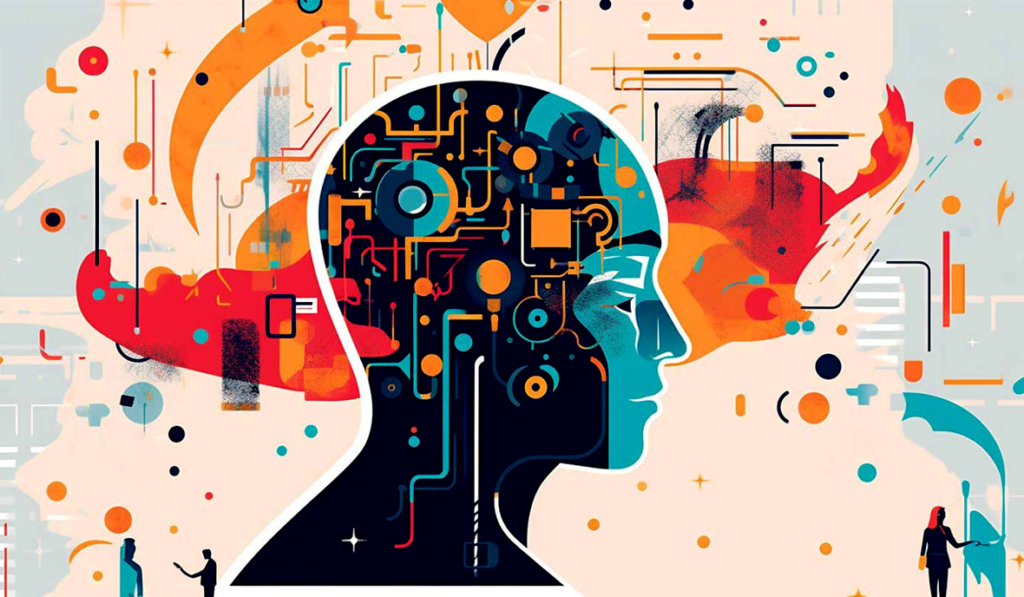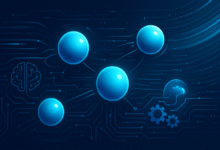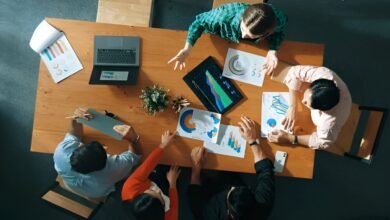
Art has always been a domain where human creativity reigns supreme. However, in recent years, the emergence of artificial intelligence (AI) has sparked a revolution in the way we perceive and create art. This article explores the intersection of AI and arts, examining how technology is reshaping creative expression.
Read More: The Latest Breakthroughs in AI Technology
Introduction to AI in Arts

What is AI?
Artificial intelligence (AI) is the simulation of human intelligence processes by machines, particularly computer systems. These processes include learning, reasoning, and self-correction. AI systems can analyze vast amounts of data, identify patterns, and generate outputs that mimic human behavior.
Overview of its applications in arts
AI is being increasingly utilized in various forms of artistic expression, including visual arts, literature, music, and more. Its applications range from assisting artists in their creative process to generating entirely new artworks. By leveraging algorithms and machine learning techniques, AI can enhance creativity, automate repetitive tasks, and explore new artistic possibilities.
AI Tools for Creative Expression
Generative Adversarial Networks (GANs)
Generative Adversarial Networks (GANs) are a type of AI algorithm used for generating new content, including images, music, and text. They work by pitting two neural networks against each other, one generating content and the other discerning whether the content is real or generated. GANs have been used to create realistic images, produce music compositions, and even generate entire scenes.
Natural Language Processing (NLP) for poetry and literature
Natural Language Processing (NLP) algorithms analyze and generate human-like text, making them valuable tools for poets and writers. These algorithms can generate poetry, short stories, and even novels, often indistinguishable from human-written works. By analyzing vast amounts of text data, NLP models can capture the nuances of language and produce creative outputs that resonate with readers.
Deep Learning for visual arts
Deep learning techniques, such as convolutional neural networks (CNNs), are used in visual arts to analyze and generate images. These algorithms can create stunning artworks, ranging from paintings to digital sculptures. By learning from large datasets of visual content, deep learning models can understand artistic styles, generate new compositions, and even assist artists in the creation process.
Enhancing Creativity with AI

Collaborative projects between artists and AI systems
Many artists are embracing AI as a collaborative tool rather than a replacement for human creativity. By working alongside AI systems, artists can explore new creative avenues and push the boundaries of traditional artistic practices. Collaborative projects between artists and AI systems can result in innovative artworks that blend human ingenuity with machine intelligence.
Examples of AI-generated artworks
Numerous examples showcase the potential of AI in generating compelling artworks. From intricate paintings to mesmerizing music compositions, AI is demonstrating its ability to inspire and provoke awe. Artists and technologists are collaborating to create interactive installations, immersive experiences, and generative artworks that blur the lines between human and machine creativity.
Addressing Concerns and Critiques
Loss of human touch and creativity
One of the primary concerns surrounding AI in arts is the fear of losing the human touch and creativity that defines artistic expression. Critics argue that AI-generated art lacks the depth and emotion inherent in human-created works. While AI can mimic artistic styles and generate new content, some believe that it lacks the intuition, emotion, and subjective experience that characterize human creativity.
Ethical considerations in AI-generated art
The rise of AI in arts raises ethical questions regarding authorship, ownership, and cultural appropriation. As AI becomes more proficient in creating art, issues of attribution and intellectual property rights become increasingly complex. Artists, technologists, and policymakers must navigate these ethical considerations to ensure fair and responsible use of AI in the arts.
Impact of AI on the Art Industry
Changing dynamics in the art market
The integration of AI in the art industry is reshaping the dynamics of the market. AI-generated artworks are gaining recognition and value, challenging traditional notions of art and aesthetics. Collectors, galleries, and art institutions are embracing AI-generated art as a new form of creative expression, sparking discussions about the future of the art market and the role of technology in shaping artistic trends.
Opportunities for artists and technologists
AI presents new opportunities for both artists and technologists. Artists can leverage AI tools to enhance their creative process, explore new techniques, and reach broader audiences. Technologists can collaborate with artists to develop innovative AI applications, experiment with new technologies, and push the boundaries of artistic innovation. By fostering collaboration between artists and technologists, AI has the potential to revolutionize the art industry and create new avenues for artistic expression.
Future Trends and Possibilities

Evolution of AI in arts
As AI technology continues to advance, its role in the arts is expected to evolve further. From more sophisticated algorithms to interdisciplinary collaborations, the future of AI in arts holds endless possibilities. Artists and technologists are exploring new applications of AI, experimenting with emerging technologies, and pushing the boundaries of creativity. As AI becomes more integrated into artistic practices, it will continue to reshape the way we perceive, create, and experience art.
Integration of AI with traditional creative processes
The future of AI in arts lies in its integration with traditional creative processes. Rather than replacing human artists, AI is poised to augment and enhance their abilities, leading to new forms of artistic expression. Artists are incorporating AI tools into their workflow, experimenting with AI-generated content, and exploring new artistic possibilities. By blending human creativity with machine intelligence, artists can push the boundaries of traditional artistic practices and create innovative artworks that captivate and inspire audiences.
Read More: Digital Wellness: Navigating the Impact of Tech on Health
FAQs
- Is AI capable of producing truly original artwork? While AI can generate artwork, the concept of “originality” in art remains subjective. AI’s ability to create novel pieces is often influenced by the data it’s trained on and the algorithms used.
- What are some ethical considerations surrounding AI-generated art? Ethical concerns in AI-generated art include issues of authorship, ownership, bias, and cultural appropriation. It’s essential to address these concerns to ensure fair and responsible use of AI in the arts.
- How can artists collaborate with AI systems? Artists can collaborate with AI systems by using them as tools in their creative process. This involves feeding input data to AI algorithms and incorporating their outputs into artworks, resulting in hybrid creations.
- What impact does AI have on traditional artistic practices? AI is reshaping traditional artistic practices by introducing new tools and techniques. While some artists embrace AI as a tool for innovation, others view it with skepticism, fearing its potential to undermine human creativity.
- What does the future hold for AI in arts? The future of AI in arts is promising, with continued advancements in technology and interdisciplinary collaborations. AI is expected to play a significant role in expanding the boundaries of artistic expression and challenging conventional notions of creativity.
The Final Words
The emergence of AI in arts represents a paradigm shift in the way we perceive and create art. While concerns about the loss of human creativity persist, AI offers exciting opportunities for innovation and collaboration. As technology continues to evolve, the boundaries between human and machine creativity will blur, ushering in a new era of artistic expression that challenges our perceptions, expands our horizons, and enriches our cultural landscape.







